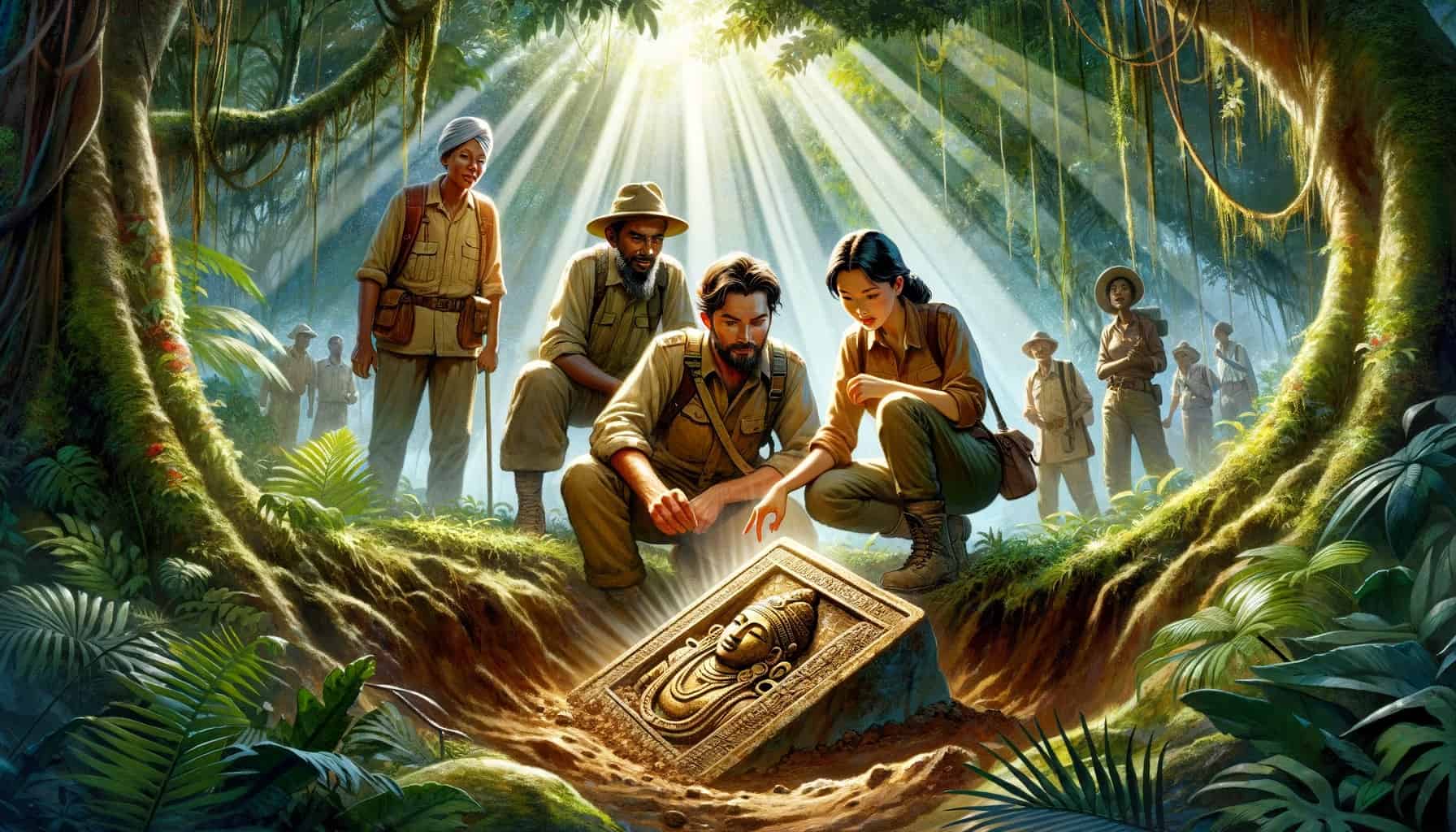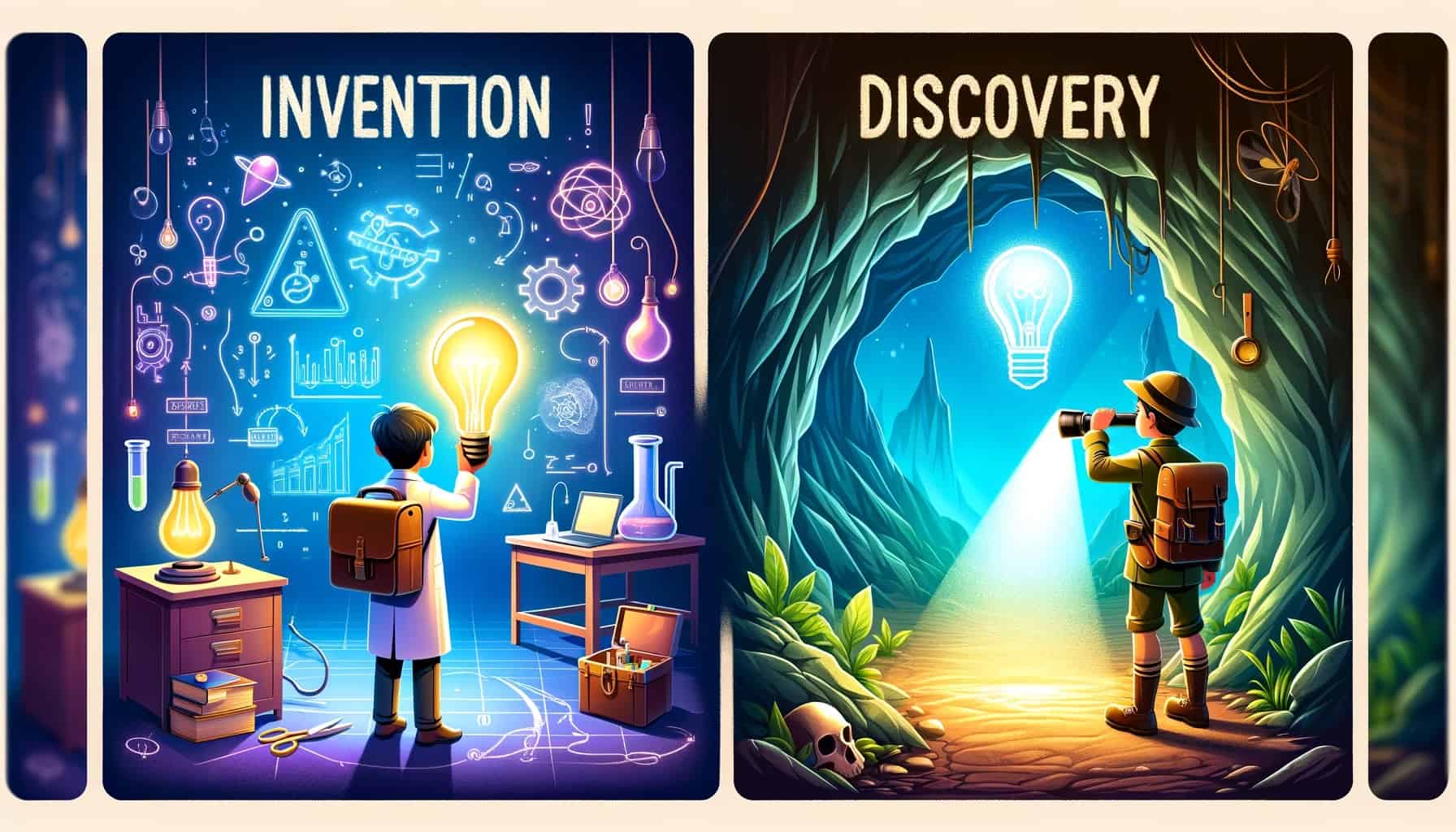Difference between invention and discovery
by Yogi P - November 8, 2023
Difference Between Invention and Discovery : Unraveling the Mysteries of Mind
In the vast expanse of human knowledge and achievement, two concepts stand out as pillars of progress: invention and discovery. Although they’re often used interchangeably in casual conversation, their meanings are distinct in the context of science, history, and intellectual property.
This article aims to shed light on the differences between invention and discovery, offering clarity through definitions, examples, and tabulated comparisons.
Defining the Concepts
Discovery
A discovery is the act of finding something that already exists but was not previously known to humans. It involves the observation of existing elements, phenomena, or facts and is rooted in exploration and research.

Discovery is the act of finding something
Invention
An invention, by contrast, is the creation of a new product, device, process, or concept that did not exist before. It is born out of innovation and imagination and often involves designing, developing, and patenting.

Invention is the creation of a new product
The Distinct Paths of Realization
Discoveries and inventions follow different paths to realization. A discovery often starts with a question about the natural world, leading to an investigation, which in turn leads to finding something that has always been there. Inventions start with an idea for something new that can be made or engineered and end with the tangible creation of that new thing.
Table: Conceptual Differences
| Aspect | Discovery | Invention |
|---|---|---|
| Nature | Finding something already existing | Creating something new |
| Process | Exploration, research, observation | Designing, developing, patenting |
| Example | Discovery of gravity by Isaac Newton | Invention of the telephone by Alexander Graham Bell |
Historical Examples
Throughout history, there have been numerous instances that clearly demarcate the line between discovery and invention. The discovery of America by Christopher Columbus revealed a land that was previously unknown to Europeans, though it had existed and been inhabited for millennia.
On the other hand, the invention of the light bulb by Thomas Edison brought artificial light into the world in a way that had never been seen before.
Scientific and Philosophical Perspectives
From a scientific standpoint, discoveries add to the body of knowledge about the natural world, such as the discovery of DNA’s structure. Philosophically, discoveries can be seen as the universe revealing its secrets to humanity.
Inventions, however, reflect humanity’s ingenuity in manipulating the natural world to create tools, systems, or products that serve specific purposes, such as the invention of the internet.
The Legal and Economic Impact
Legally, discoveries and inventions are treated differently. Inventions can be patented, granting the inventor exclusive rights to profit from their creation. Discoveries, however, cannot be patented because they involve finding something that already exists in nature.
This distinction has significant economic implications, as inventions can lead to the creation of new markets and industries, while discoveries may not have the same direct economic potential.
Table: Legal and Economic Impact
| Aspect | Discovery | Invention |
|---|---|---|
| Patentability | Not patentable | Patentable |
| Economic Potential | May lead to indirect economic benefits | Direct creation of new markets and industries |
Cultural and Ethical Considerations
Culturally, discoveries often shift our understanding of the world and our place in it. Ethically, they can raise questions about responsibility and stewardship. Inventions, meanwhile, can have cultural impacts by changing the way we live and interact with each other and can raise ethical issues related to technology and progress.
Table: Cultural and Ethical Impact
| Aspect | Discovery | Invention |
|---|---|---|
| Cultural Impact | Shifts understanding of the world | Changes ways of life and interaction |
| Ethical Considerations | Questions of stewardship and responsibility | Issues related to technological advancement |
Invention Born from Discovery
The relationship between discovery and invention is not mutually exclusive. Often, an invention is born from a discovery. The discovery of electricity led to the invention of countless devices that utilize electrical power.
Similarly, the discovery of radio waves led to the invention of the radio, television, and other communication devices.
The Driving Force of Human Curiosity and Creativity
At the core of both discovery and invention is human curiosity and creativity. Whether it’s the desire to explore the unknown or the urge to create new solutions to problems, both activities are essential to the advancement of human society.
Moving Forward: Innovation and Knowledge Expansion
As we move forward, the lines between invention and discovery can blur, especially with fields like biotechnology and artificial intelligence, where new creations are often closely tied to scientific discoveries.
However, the fundamental distinction remains: discovery is about finding what is already there, and invention is about bringing into being that which has never existed.
Conclusion
The interplay between invention and discovery is a testament to the dual nature of human progress: our capacity to unveil the mysteries of the universe and our ingenious ability to craft tools and concepts that transform our lives.
As we continue to explore and innovate, the stories of discoveries and inventions will remain integral chapters in the narrative of human achievement.
In this exploration of invention and discovery, we’ve navigated through definitions, processes, historical instances, and the broader implications on legal, economic, cultural, and ethical fronts.










